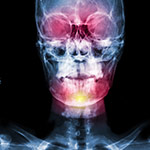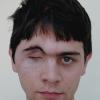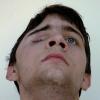CRANIAL DEFICITS REHABILITATION - CRANIOPLASTY
With the term ‘cranial deficit’ we mean the absence of a part of the cranial skeleton. In the region of the deficit, the cerebrum envelope (dura mater) is only covered by the scalp or the forehead skin, creating both significant malformation and leaving the cerebrum vulnerable to injuries. Cranial deficits are issued as a result of injuries with loss of bone segments. Rarely, it may come as a result of congenital abnormality.
REHABILITATION
The rehabilitation aims to give a normal shape in the area and simultaneously to ensure the necessary protection to the cerebrum. For the reconstruction of the part of the skeleton that is missing, various materials have been used such as metal plates, polymerizable plastics and more recently, newer synthetic materials which can even be constructed in the shape of the deficit with the help of computers and on basis of imaging deficit with 3D CT scan.
But all the synthetic materials have significant disadvantages especially over time, such as a high rate of skin corrosion and their exposure, high rate of transfection and rejection and finally at precast prostheses, the high cost of construction.
On the contrary, the use of autologous grafts that are taken from the body itself, leads to stable results, with their full integration to the whole skeleton, without the aforementioned disadvantages and complications.
In the reconstruction of the skull, the best and largely unique material selection is the bone grafts that are taken from the scull itself. The calvaria bones consist of two bone plates, between of which, it is interposed a softer bone layer that is called diploe. With the suitable technique, it is possible the separation of the cranial bone in the medial and lateral plate. This handling essentially doubles the amount of available bone, thus ensuring the necessary material for the reconstruction of the missing part. In some cases it is necessary to combine grafts from the skull using bone grafts from other parts of the body, such as the ilium bone (or pelvic bone), or/and ribs (costal bones) (more rarely). This type of reconstruction requires great clinical experience in craniofacial techniques, and this is the main or the only reason that this technique is applied to a limited extent.
In childhood, this method may be applied after the age of 5 or 6, only in a limited extent, because diploe begins to form at the age of 5.





